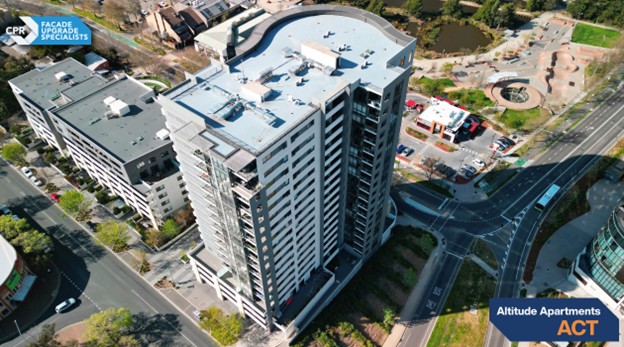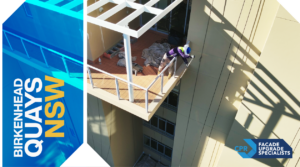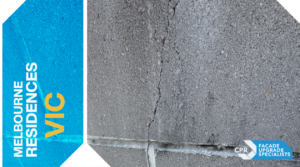Every cultural heritage building deserves a future as robust as its past.
Canberra’s skyline is a tapestry of modern icons and beloved heritage architecture. Heritage Facade Assessments in Canberra: Preserving History While Ensuring Safety are therefore essential—not just to satisfy Heritage compliance ACT regulators, but to ensure residents, visitors and future generations can enjoy these landmarks without risk. Within the first 100 words you have already discovered how intertwined heritage facade assessment, safety audits of heritage sites and facade preservation Canberra truly are.
Why Heritage Facade Assessment Matters for Canberra’s Built Legacy
Canberra heritage buildings—from the Old Parliament House to 1930s civic offices—tell the story of Australia’s capital. Yet extreme temperature swings, bushfire smoke, vibration from construction and the city’s growing population put façades under stress. A proactive heritage building inspection identifies early signs of decay long before they become structural failures, enabling building conservation Canberra strategies that cost less and last longer.
Key benefits include:
- Historic facade safety for occupants and passers‑by.
- Structural integrity heritage verifications that satisfy insurers and regulators.
- Protecting aesthetic significance, boosting tourism and property value.
- Aligning with local planning instruments, the Territory Plan and National Heritage List requirements.
Without timely intervention, minor mortar loss or cracked terracotta can evolve into delamination, falling masonry or water ingress that demands intrusive—and expensive—interventions.
Understanding ACT Heritage Compliance and Safety Obligations

The Australian Capital Territory’s Heritage Act 2004 mandates owners of registered places to maintain structures in a stable, weather‑tight condition. The ACT Building Code also calls for duty‑of‑care to mitigate foreseeable hazards. A heritage facade assessment Australia delivered by CPR Facade Upgrade Specialists fulfils both sets of obligations, combining traditional conservation principles with innovative access systems such as:
- Scaffold‑free™ vertical solutions that spare fragile sandstone from anchor damage.
- MARS™ Multiple Access Rope System for untangled rope routes on complex parapets.
- PEARS® Portable Elevation Access Rope Systems, enabling precise drop positioning without crowding footpaths.
- SkyPod® encapsulated workstations controlling dust and debris when testing render pull‑out strength.
- Upseiling® fully articulated vertical movements so our conservation masons can reach under ornate cornices.
Each project is overseen by our quality management trio—ASP’S™, SFS360® and SE2EPC®—documenting every crack gauge and sample location for traceable heritage compliance ACT audits.
Common Defects in Historic Facades—and How to Spot Them Early
Even the sturdiest Canberra bluestone or brickwork can hide vulnerabilities. Our engineers frequently encounter:
| Defect | Why It Matters | Early‑Warning Signs |
| Differential settlement | Compromises lintel bearing length | Stepped cracking at soldier courses |
| Corrosion of embedded steel | Causes spalling and falling fragments | Rust staining near window arches |
| Freeze–thaw in porous render | Progressive loss of surface detail | Hollow‑sounding patches on tapping |
| Biological growth | Retains moisture, increases salt attack | Dark streaks or moss in grout lines |
| Incompatible past repairs | Accelerated decay of adjacent original fabric | Mismatched colour or texture |
A scheduled Canberra facade inspection detects these issues early. Using remote sensing, drones and thermal imaging—followed by close‑up rope access tests—we provide a quantified structural assessment old buildings report that ranks every defect by risk and recommends preservation priority.
The CPR Scaffold‑free™ Methodology for Difficult‑Access Heritage Buildings
Conventional scaffolding can obscure decorative friezes for months, disrupt tourist footfall and even damage delicate stone with tie‑ins. Our Scaffold‑free™ approach eliminates these drawbacks:
- Digital SFS360® Scoping – We grid the facade in Revit, overlaying historical drawings to ensure cultural details are considered.
- Precision Anchoring – MARS™ anchors are installed in mortar joints or hidden parapet cavities, preserving the visible fabric.
- Vertical Logistics – PEARS® hoists test equipment, allowing our conservation engineers to start sampling within hours—not days.
- Encapsulated Work Zones – A SkyPod® creates a micro‑climate, capturing paint flakes for laboratory lead testing while preventing debris from falling onto City Walk below.
- Real‑Time QA – ASP’S™ accredited trades upload photographs to the cloud after each probe, enabling heritage advisors to review from their office.
This methodology minimises public disruption, maintains building aesthetics during works and accelerates decision‑making—ideal for heritage restoration Canberra projects bound by parliamentary sitting schedules or ANU semester breaks.
Integrating Structural Integrity with Preservation Goals
One misconception is that conservation inhibits robust structural repair. In fact, modern conservation charters—including the Burra Charter—promote compatible upgrades that prolong life. Our assessments balance heritage architecture safetywith authenticity by:
- Calculating load paths to justify discrete carbon‑fibre stitching behind original stone.
- Specifying breathable lime mortars that allow evaporation while resisting freeze–thaw.
- Designing stainless Helifix ties installed via 8 mm holes—easily plugged with matching aggregate.
- Recommending sacrificial anodes to halt embedded rebar corrosion in Art Deco terracotta.
The result? Preserving historical facades without compromising the public’s right to safety.
Case Study: Civic Square Administrative Block
When the ACT Government commissioned a structural assessment old buildings review of the 1958 Administrative Block in Civic Square, time and access were critical. Three‑storey projecting fins prevented scaffold erection above the pedestrian arcade.
Challenges
- Heritage‑listed reinforced concrete showing carbonation.
- Busy events calendar and weekend markets below.
CPR Solution Using MARS™ ropes, PEARS® hoists and a SkyPod® workstation, our team mapped 2 400 m² of concrete in four days, taking 120 half‑cell potential readings. The ASP’S™ database assigned condition grades; our report pinpointed 27 areas requiring electrochemical treatment. The project team used our findings to secure National Capital Authority approval in just two weeks—proving that difficult‑access heritage inspections can meet tight public deadlines while ensuring historic building maintenance outcomes.
Sustainability and Long‑Term Maintenance: AfterCare™ for Heritage Assets
A one‑off report is just the beginning. Our AfterCare™ program turns insight into lifecycle management:
- Bi‑annual safety audits heritage sites with rope‑access spot checks.
- Moisture monitoring sensors embedded at critical cornice junctions.
- Digital twin updates in SFS360®, tracking every repair and material batch.
- Training facility and strata managers in minor mortar maintenance, backed by phone support.
This proactive pathway reduces reactive call‑outs by 40 % and extends treatment intervals—delivering savings to owners while keeping façades compliant and visually stunning.
Choosing the Right Heritage Facade Consultant in Canberra
Not all consultants combine conservation ethos with high‑rise capability. Ask prospective partners:
- Do you employ IRATA‑qualified rope‑access technicians experienced in cultural heritage building contexts?
- What non‑destructive testing (NDT) methods do you use before recommending invasive probes?
- Can you demonstrate successful projects involving Scaffold‑free™ or similar difficult‑access systems?
- Will you provide a comprehensive defects assessment scope and report aligned with ACT Heritage Council guidelines?
CPR ticks every box—and more—with our proprietary technology, triple‑tier QA and 15‑year track record across government, strata, commercial, industrial and heritage sectors.
Next Steps: Book Your Heritage Facade Assessment Today
Safeguard your building’s story, protect the public and stay compliant—all without scaffolding clutter. Book a Defects Assessment & Scope Report now or call us to speak with a heritage consultant. Let’s preserve Canberra’s architectural legacy—securely, sustainably and Scaffold‑free™.






